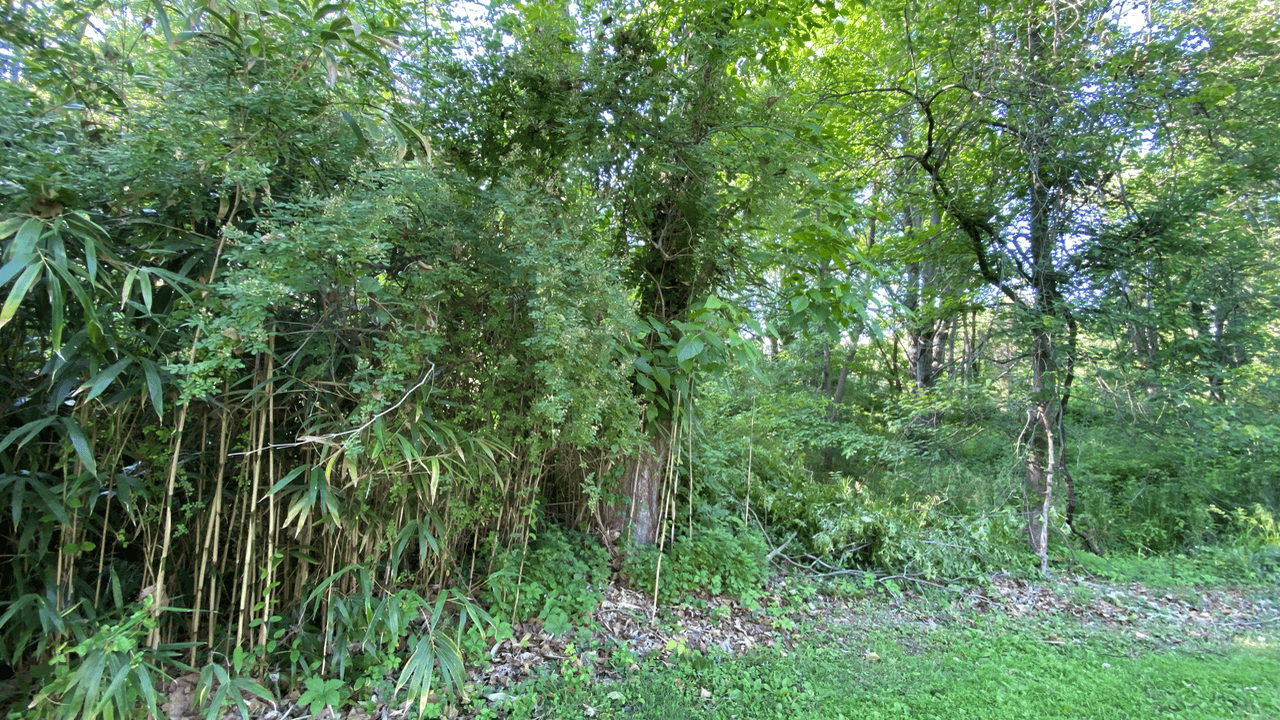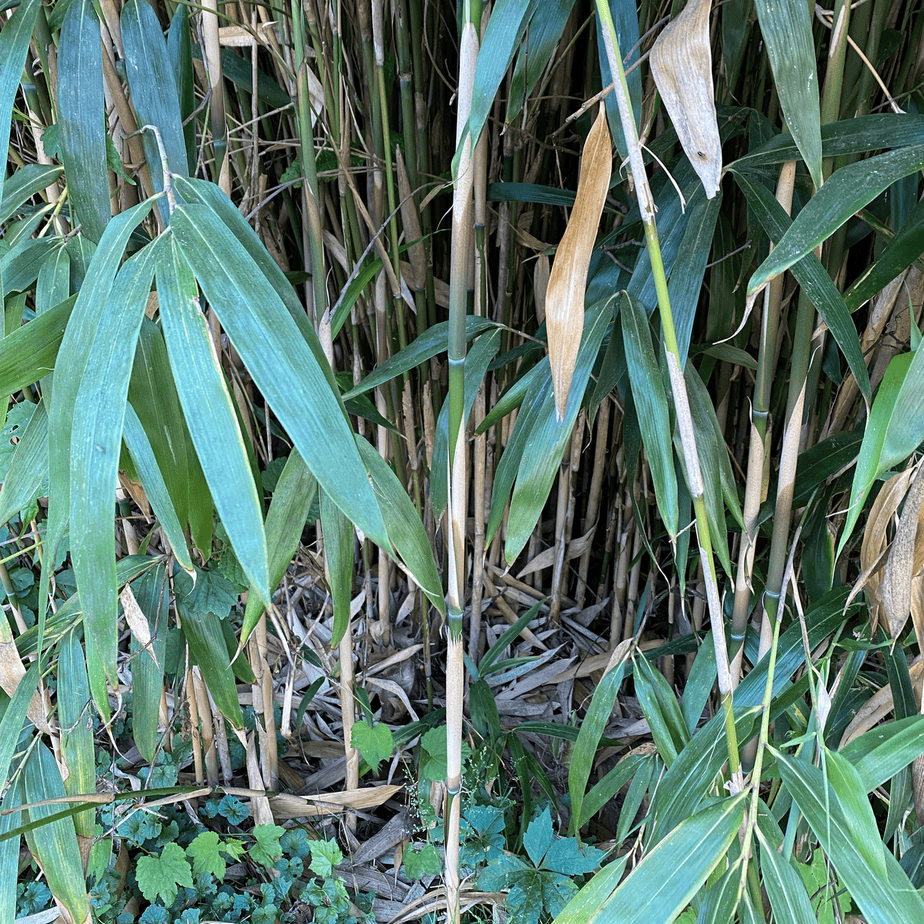We get lots of inquiries about bamboo removal. There has been an increase since Fairfax County issued it's ordinance on running bamboo removal or containment.
- In March of 2022, the Fairfax County Board of Supervisors passed a new Bamboo
Ordinance that goes into effect on January 1, 2023, to be enforced by the Department of Code Compliance on an individual complaint basis. Fairfax County Code § 119-3-2 provides that:- A bamboo owner must not allow running bamboo to spread from the bamboo owner’s property to any public right-of-way or any adjoining property not owned by the bamboo owner, and
- A bamboo owner must contain the running bamboo to keep it from spreading onto any public right-of-way or adjoining property not owned by the bamboo owner.
I am assuming that is why you are reading this page! You probably already figured out that running bamboo is an invasive species. It is able to live in a variety of conditions. Because it grows so tall and thick, and spreads so prolifically above and below ground, it is difficult to contain. The roots and rhizomes are very destructive to structures. Plus, like other invasive species, it overtakes native plant life. This has a negative ripple effect in the environment. Read on to find out more about running bamboo removal.
Facts about bamboo that impact the process of running bamboo removal:
First, bamboo is grass. Like other grasses, it uses photosynthesis to turn sunlight into energy.
Second, running bamboo grows from a colony. This is a means that it uses the existing plants/roots to grow new plants. Sort of like Aspen trees that grow in clones, or stinging nettle that grows from rhizomes. One important thing to note is that bamboo takes about 3 years to get fully established. As a result, it is easiest to remove bamboo in the first three years.
Third, bamboo grows for about 60 days each year. During this time, it produces canes or culms. These are other names for bamboo stalks. Depending on the species, it takes several years of growing cycles for the stalks to reach full size.
Finally, canes usually last around 10 years. They grow very close together and form dense patches of bamboo.
How do we remove bamboo?
We only provide physical removal of bamboo. We do not apply herbicides, however we do install physical barriers.
Physical bamboo removal is a two-step process. First, the canes are cut down and chipped up. Second, the root system is ground up using a heavy equipment.
You may choose not to remove all of the bamboo, and just install a barrier. In those situations, we remove the bamboo (and sometimes roots) in an area big enough to work, then dig a 30" trench, install the barrier per Fairfax County guidelines (36" tall barrier 30"inches deep with 6" above ground).
That sounds simple right? It is not that easy.
Difficulties with Bamboo Removal
Bamboo is just nasty to work with. The canes splinter, and they can cause injury to staff.
Per the Fairfax County ordinance, bamboo is disposed of as trash. It is expensive to dispose of.
Most importantly, many times large, deep areas have to be excavated to remove all of the roots. This leaves a big disturbed area. In order to get anything to grow in that area, we must haul away the grindings and dispose of them. Finally, we cover the area with new, clean dirt and topsoil.
Final Thoughts
Certainly we continue to provide bamboo removal services and the installation of barriers. Hopefully this post clarifies the bamboo removal process. If you are interested in getting a consultation and/or estimate to remove a patch of bamboo, please call (703) 450-1898 or email us at contact@vicstreeservice.com

